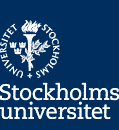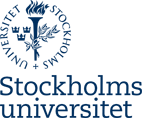Med polska ögon. Försvarsförmåga och hotbilder kring Östersjön i polsk militärrapportering 1919–1939
Vid första världskrigets slut uppstod en rad nya stater i Östersjöområdet. Den geografiskt största av dem var det nygamla Polen. Landet ställdes genast inför uppgiften att finna fotfäste och säkerhet i en föränderlig och oberäknelig omvärld. Att utvärdera andra stater i närregionen och deras försvarsförmåga blev en del av det grundläggande polska säkerhetsarbetet. Piotr Wawrzeniuk diskuterar hur Sveriges, Finlands och Estlands försvarsförmågor framställdes i polsk militärrapportering. Med fokus på mindre staters typiska beteende i en utdragen, konfliktfylld situation beskriver han hur de närstående försvarsmakterna tedde sig utifrån polska intressen. Vad kännetecknade de andras officerskårer, manskap och materiel? Hur skulle dessa försvarsmakter klara det moderna slagfältets utmaningar? Wawrzeniuk konstaterar att rapporteringen om ländernas samhällsstrukturer och försvarsmakter i hög grad präglades av polska nationella föreställningar och farhågor. Emellanåt speglar dokumenten snarare polska utgångspunkter än redovisar objektiva intryck. Samtidigt framgår det tydligt att polackerna hade påverkats av de lägesbilder som deras kollegor i de tre länderna målade upp. På så sätt kan även militär kultur sägas ha påverkat vad som rapporterades hem.
Through Polish eyes. Defence capability and threats around the Baltic Sea in Polish military reporting 1919–1939
At the end of the First World War, a number of new states emerged in the Baltic Sea region. The largest of them was Poland. It immediately faced the task of finding security in a changing and unpredictable world that followed the collapse of the Romanov, Habsburg and German Empires. Evaluating other states and their defence capability in the Baltic Sea region became part of the basic Polish security work. With focus on the typical behaviour of smaller states in a protracted, conflict-filled situation, Wawrzeniuk discusses how Polish military attachés in Sweden, Finland and Estonia presented the defence capabilities of those three states. What were the main characteristics of their officers' corps, soldiers, and the materiel they used? How did they adapt to the challenges of the ever-developing modern battlefield? Wawrzeniuk notes that various Polish national and professional perceptions and concerns nurtured by the attachés influenced the reports on the countries' social structures and armed forces. At times, the documents mirrored Polish economic, social and military conditions, rather than the actual state of affairs. At the same time, it appears that their military colleagues in the three states influenced the attachés with their own views of the society and armed forces – the shared military culture mattered.






